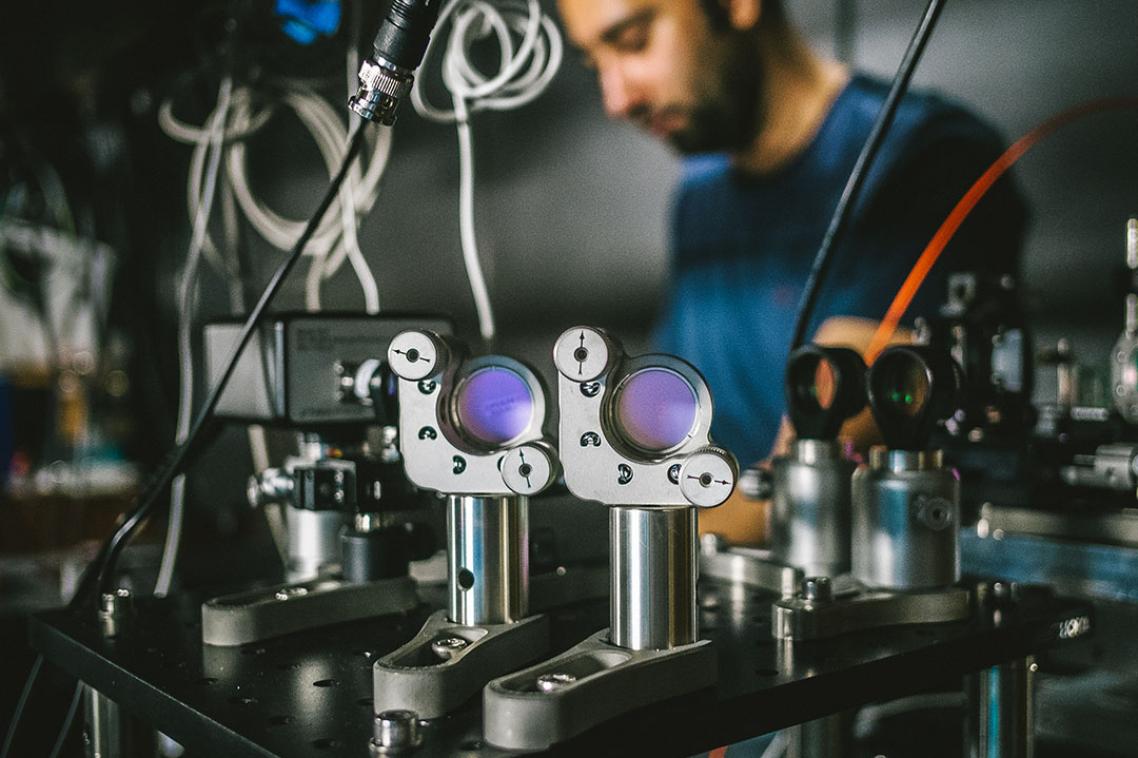
Space
Forging new human endeavours in space
UQ is applying our cutting-edge research and technology to build Australia’s advanced manufacturing base, develop the STEM workforce to meet sovereign space aspirations, improve environmental and socio-economic outcomes and improve the health of astronauts at international space stations.
Our excellence in high temperature matrix composite materials is boosted by integration with Queensland’s vibrant defence and aerospace community, characterised by innovative SMEs connected to global supply chains.
We've provided a significant portion of the world’s hypersonic expertise and continue to work closely with our partners in other disciplines, such as quantum communications for space, human habitation and health, earth observation and remote sensing.

What we offer
Partnering with us provides access to the following benefits.
Secure quantum communications
Our quantum researchers are pioneering a new class of computing and communication devices more robust to radiation, which can extend satellite operations.
High-temperature materials
We're developing high-temperature composite materials that can withstand the extreme conditions of hypersonic flight and space travel.
Protection for space missions
In partnership with Boeing Research and Technology-Australia, antimicrobial coatings developed by UQ scientists are protecting international space missions.
Our capabilities
We offer capabilities in the following spaces.

Hypersonics
- Development of hypervelocity test facilities for space propulsion and planetary entry and high-speed vehicle science
- Experimentation, analysis and design of SCRAMjet propulsion
- Development of electric propulsion systems and flight testing demonstrations
- Aerothermodynamic experimentation and analysis for rocket flight testing
- Advanced instrumentation for aerodynamic measurements
- Computational fluid dynamic analysis of hypervelocity flows
- Optical diagnostics for hypervelocity super-orbital flows
- Development of technologies for near earth observation.

Advanced manufacturing and composites
- Investigating new technologies for efficient machining of aircraft components
- Developing techniques to machine titanium components
- Using Laser-assisted machining to lower force and allow for faster cutting rates
- Using advanced coolant technologies to remove heat from cutting tools and extending tool life
- Using modelling to better understand the cutting process, allowing researchers to identify better machining processes
- Benchmarking to improve machining technologies, refine machining techniques, optimise tool path programming and improve productivity
- Advanced manufacturing of ceramic matrix composites to handle high temperature and mechanical stresses.

Human habitation and health
- Mitigating the effects of living in reduced gravity environments
- Improving mental and physical health, and managing musculoskeletal pain in astronauts
- Recovery during and after long-term flight
- Energy requirements for muscle mass maintenance and optimal performance
- Evaluation of novel foodstuffs grown, harvested and consumed during long flights or on non-terrestrial bases
- Monitoring of trace organic pollutants and chemicals of concern
- Enhancing cognitive performance and offsetting the impacts of sleep deprivation
- VR-based training optimisation
- Antimicrobial coatings to protect personnel in spacecraft and space stations
- Speed breeding techniques for plants.

Earth observation and remote sensing
- Providing private and public sector with techniques to turn satellite and airborne images and field survey data into meaningful maps or information
- Providing foundational knowledge and skills in image acquisition and analysis as part of geo-spatial information programs in our science, arts, environmental science and management degrees
- Developing Australia’s capabilities to collect and use earth observation data across all our industries, levels of government, community and research groups
- Key members of the Queensland Earth Observation Hub – a jointly funded initiative of SmartSat CRC and the Queensland Government
- Leading role in the Joint Remote Sensing Research Program (JRSRP), which utilises remotely sensed data, field-work and spatial models to measure, map and monitor biophysical properties in terrestrial, atmospheric and aquatic environments to better understand and manage the earth’s environments and resources.

Quantum technologies
Our quantum research specialises in:
- magnetic field sensors and communication devices for space science and communications
- computer processors for the aerospace industry based on the flow of phonons (quanta of mechanical vibrations) rather than electrons
- foundations of quantum cryptography for secure ground-to-satellite communications.
Partner with us
Keen to know more or have an idea for a partnership? Contact our industry specialist.
Dr Greta Nabbs-Keller
Associate Director (Defence, Space and National Security)
Strategic Partnerships - Government and Industry
Email g.nabbskeller@uq.edu.au

Facilities and infrastructure
Key facilities and equipment includes:
- UQ Centre for Advanced Materials Processing and Manufacturing
- UQ Centre of Hypersonics including extensive shock tunnel and testing facilities
- Australian Program Office for Advanced Hypersonics (APOAH)
- Ground testing facilities and analytical instrumentation
- Boeing Research and Technology (BR&T-Australia) Technology Centre
- UQ Precision Sensing Initiative
- UQ Queensland Quantum Optics Laboratory.
We also offer:
- micro and nanofabrication facilities, provided through the Australian National Fabrication Facility (Queensland Node) and the Centre for Microscopy and Microanalysis
- photonic and electronic integration, packaging and prototyping facilities provided through the UQ Precision Sensing Initiative and Australian Centre for Engineered Quantum Systems.
These state of the art facilities allow the design and fabrication of precision quantum and photonic technologies at the few-nanometre level and their deployment into applications.
Who we work with
Partners
- Australian Space Agency
- SmartSat CRC
- Sovereign Manufacturing Automation for Composites (SOMAC CRC)
- Queensland Earth Observation Hub
- Gilmour Space Technologies
- Black Sky Aerospace
- Hypersonix Launch Systems
- NASA
- Defence Science and Technology Group
- Defence Materials Technology Centre
- Lockheed Martin Australia
- Thales Australia
- Boeing Research and Technology-Australia
- BAE Systems
Research stories
See our research in action, learn more about ongoing projects and read our success stories.

Advancing the science of planetary entry

A new era of hypersonics testing

